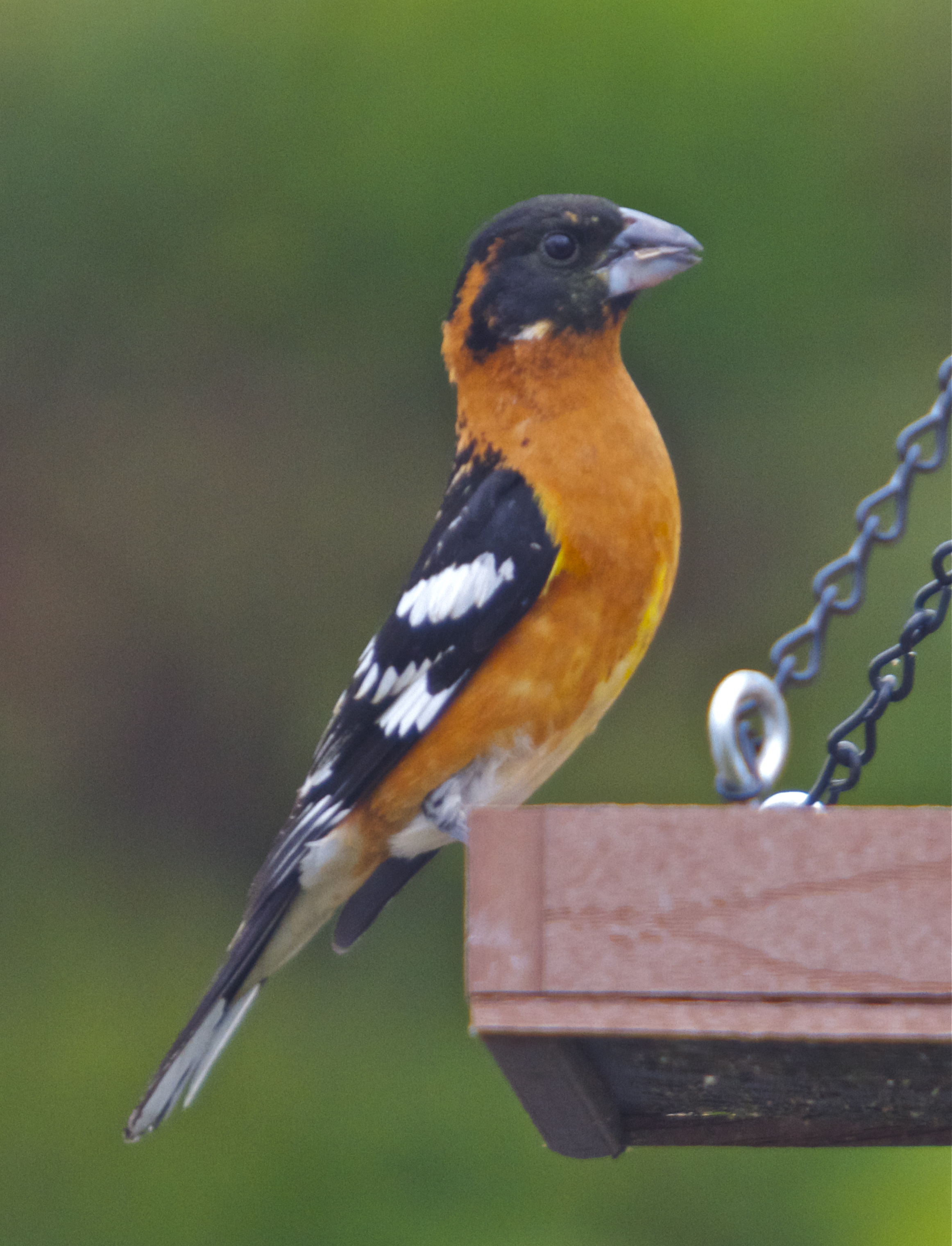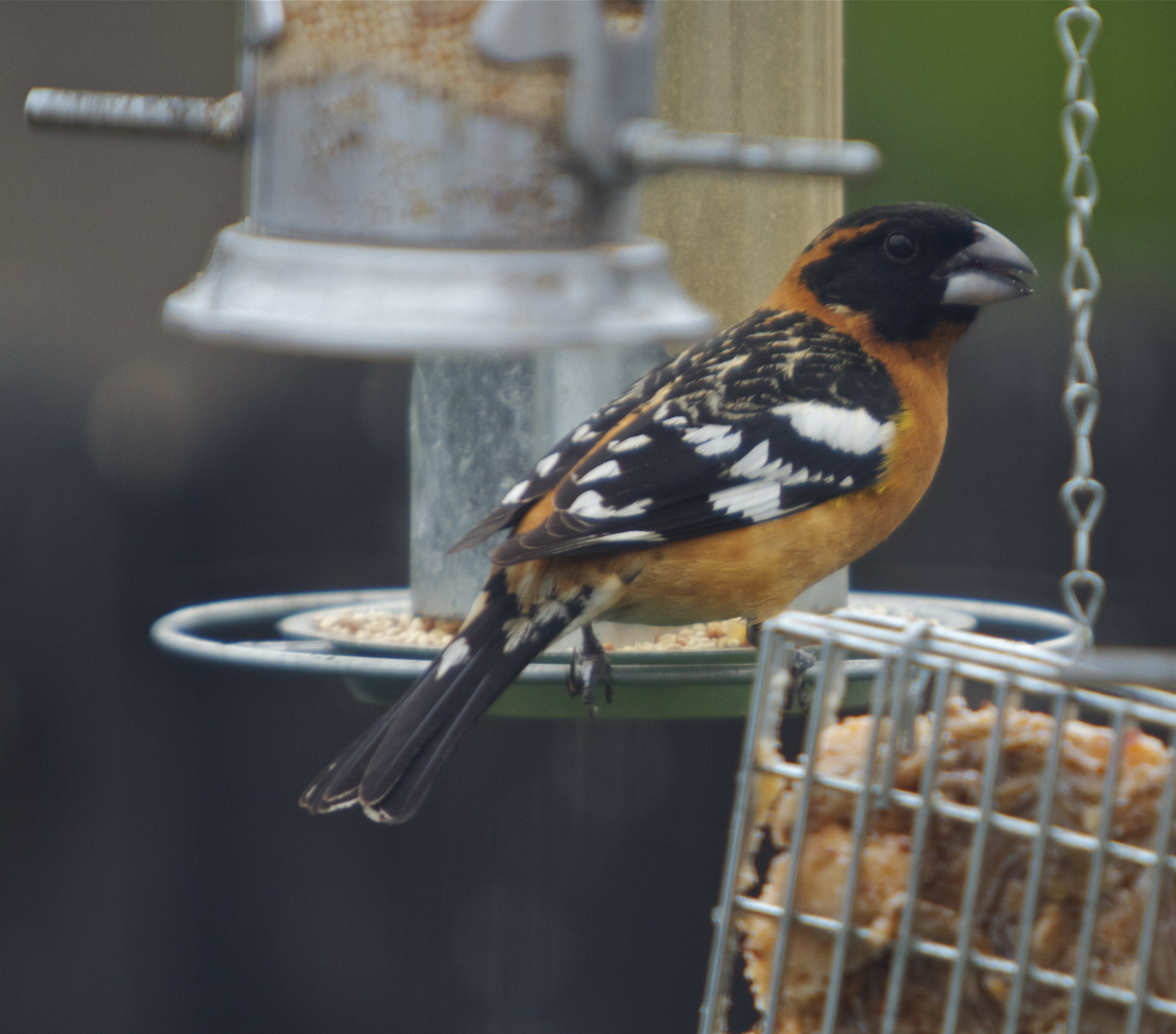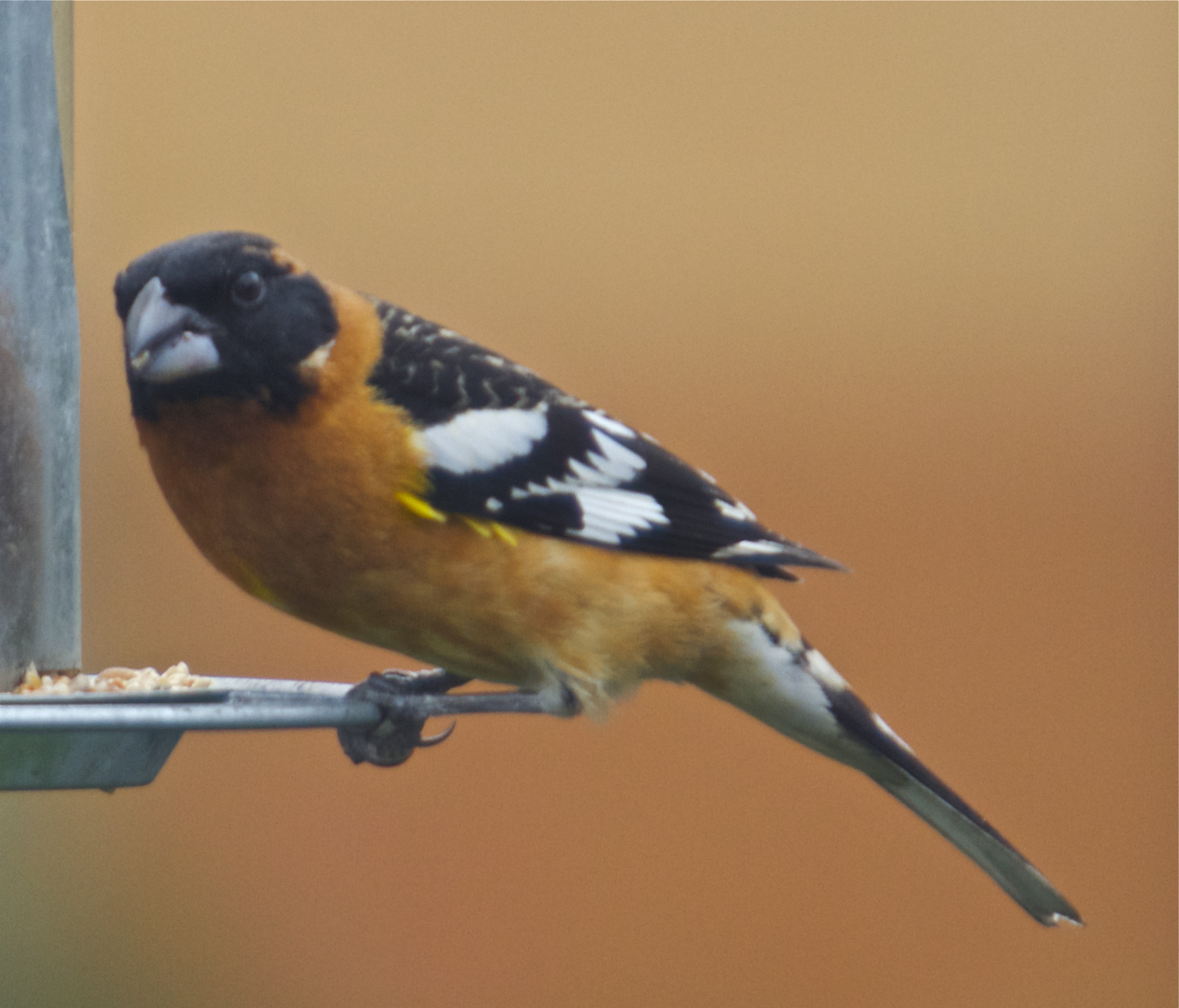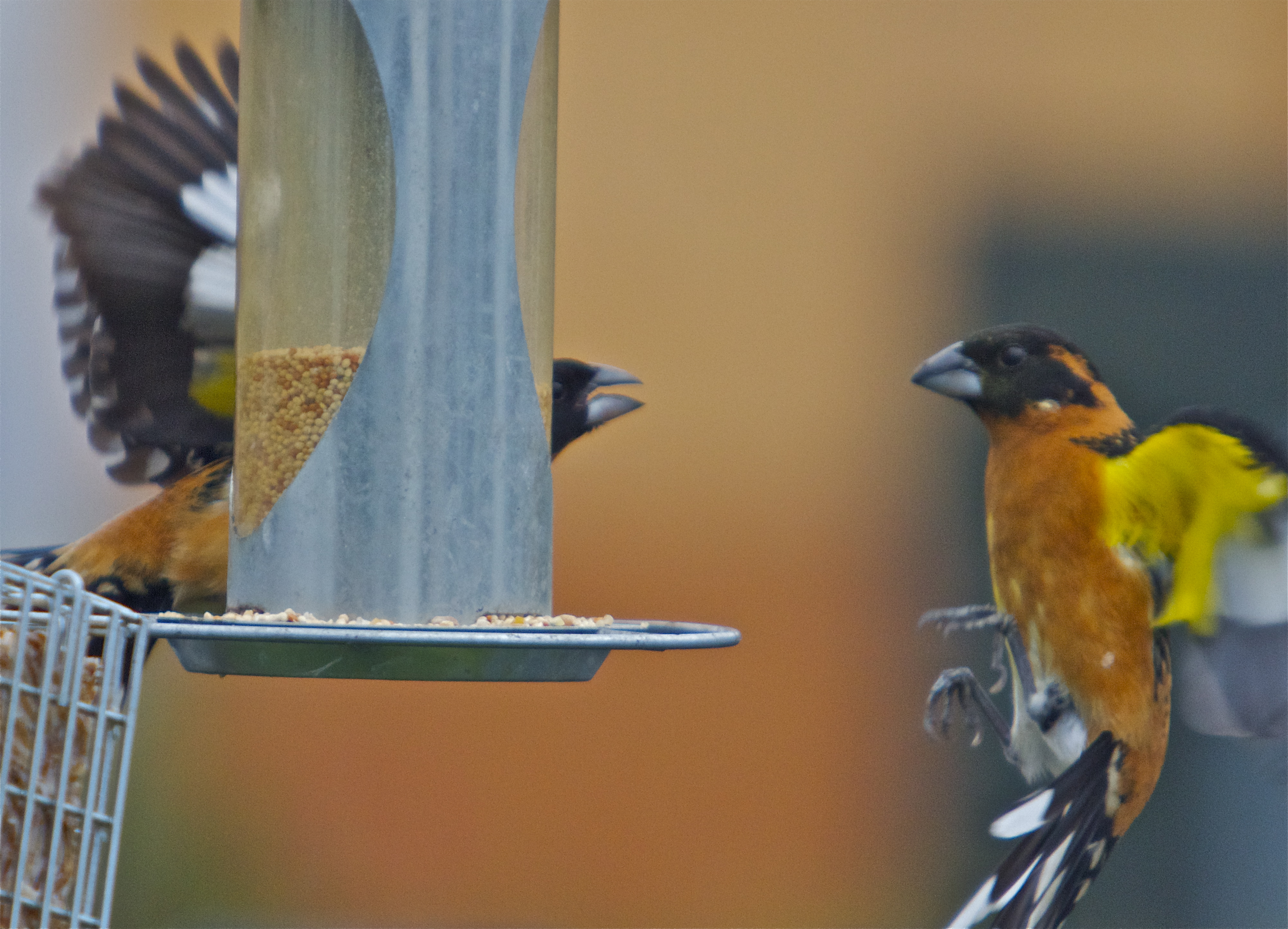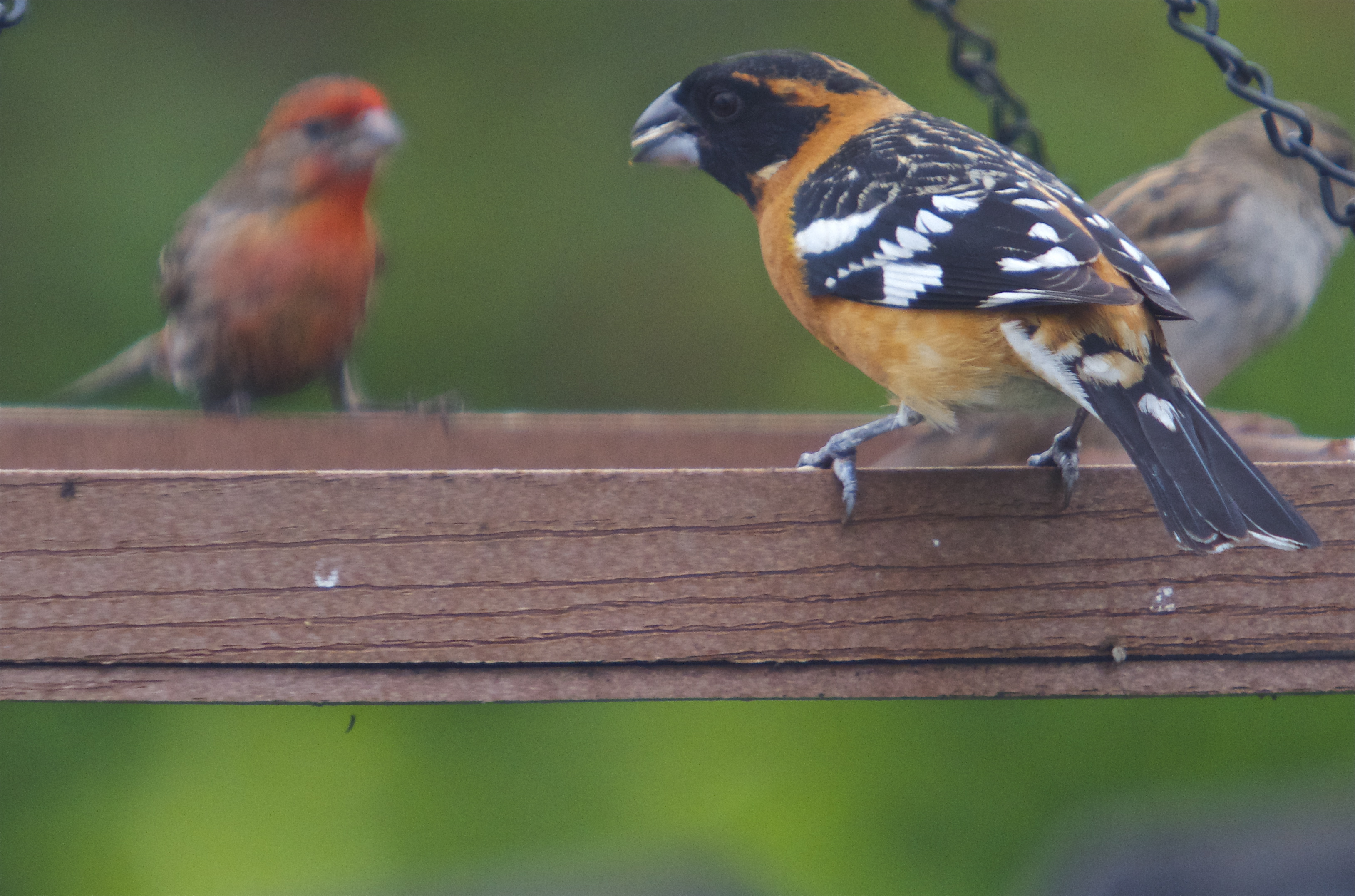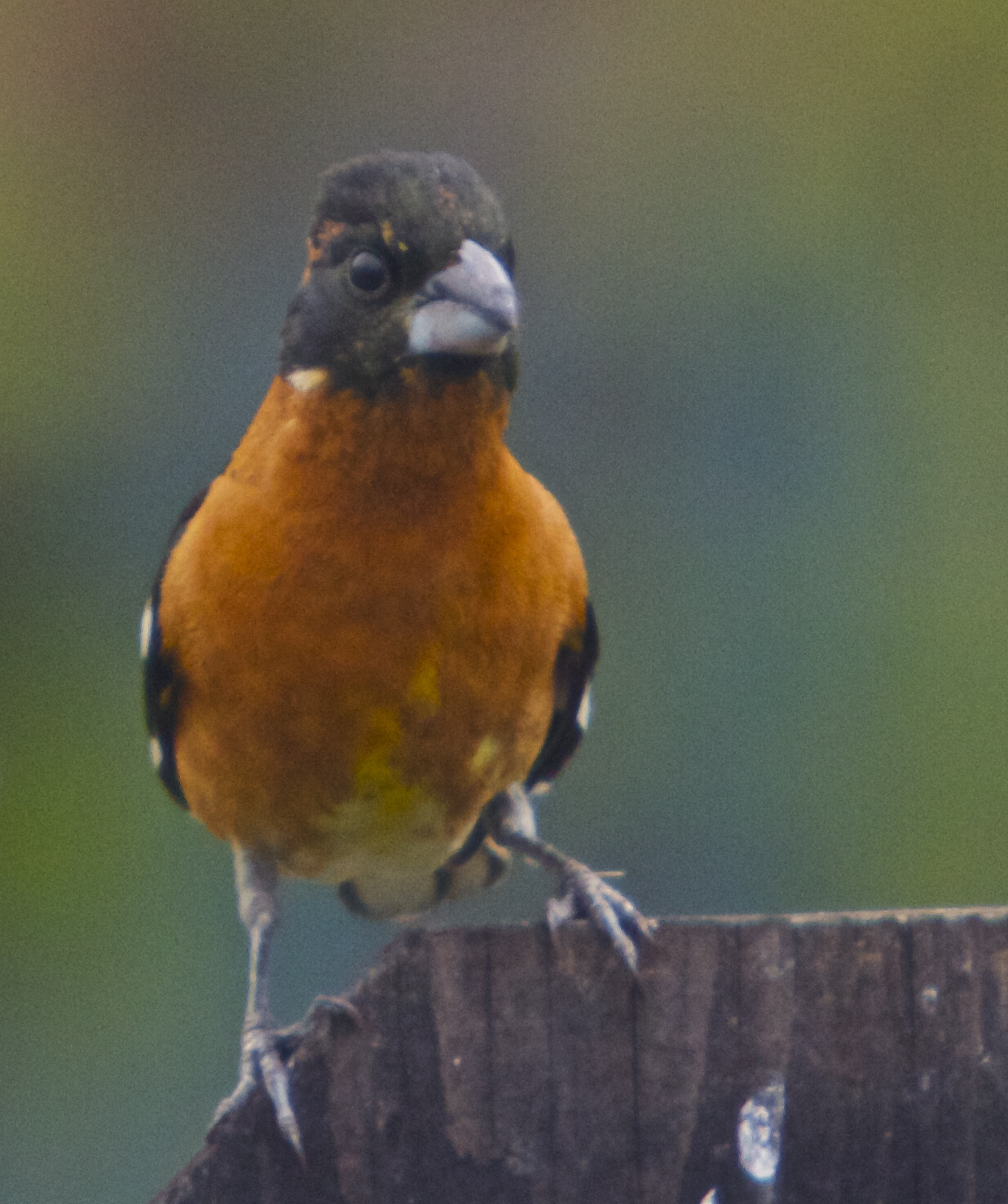What a pleasant Earth Day surprise! Just yesterday, I saw a Black-headed Grosbeak at my feeder for the first time ever.
My family and I had just finished up our usual Sunday brunch and returned to my house to watch the Los Angeles Lakers take on Oklahoma. Per usual, we spent more time staring out the window at the bird feeders than watching hoops on TV. Eventually, I decided to retreat to the couch and enjoy some much-needed relaxation. Just as I melted into my soft, comfy cushions, my father shouted, “Danielle, Danielle, come here! Slowly…. Shhhh…”
“Dad, are you joking? I just sat down! It can’t be that good.” Regardless, I leapt from my heavenly couch and ran back to the window to see what he was pointing toward.
“Shut up!” I whispered. My jaw dropped.
“A Black-headed Grosbeak. Well, that’s a first. So cool!” I exclaimed.
Thrilled, I continued to stare. It isn’t every day that one sees this migratory bird at one’s feeder. In an effort to savor the sight of this striking bird – with its tawny orange breast, meyer lemon belly, black licorice wings, matching tail, and flashy white patches – at my feeder, I grabbed my bins and sat there for nearly 30 minutes trying to memorize this beautiful image. Completely distracted by the bird’s bright colors and thick, prominent bill, I failed to realize that the feeders were nearly empty, despite the fact that they had been filled just two days ago (insert blushing backyard birder here).
Worried that the lack of food would deter this stunning male from returning, I immediately ran to pour some more sunflower seeds, mealworms and millet in the feeders. By this time, it was nearly dark, and I was beginning to worry whether or not I’d see him again…
And then there were two! Seriously. Just when I had lost hope of seeing this stunning male Black-headed Grosbeak at my feeder again, he showed up with a friend! I couldn’t have been happier. My husband, Jonathan, grabbed the camera and started snapping away…
Common Name: Black-headed Grosbeak
Latin Name: Pheucticus melanocephalus
Range: Medium to long-distance migrant. Found in southwestern British Columbia (Summer), the western and midwestern United States (Summer), and Mexico (Winter; some year-round residents).
Habitat: Prefers deciduous forests, mixed wooded areas, backyards, and gardens.
Diet: Insects, fruit, and seeds. Including: Spiders, snails, beetles, butterflies, Juneberries, Poison Oak, Elderberries, dock, pigweed, chickweed, Figs, Mulberries, Cherries, Apricots, Plums, Blackberries, and Crabapples.
Conservation Status: Least Concern.
Did you know?!?
- In central Mexico, where the Black-headed Grosbeak and Monarch Butterfly winter, the bird is of the only predators of the notoriously toxic butterfly. Black-headed Grosbeaks have been observed feeding on the Monarchs in 8-day cycles, presumably to regulate toxic levels.
Happy Birding!












